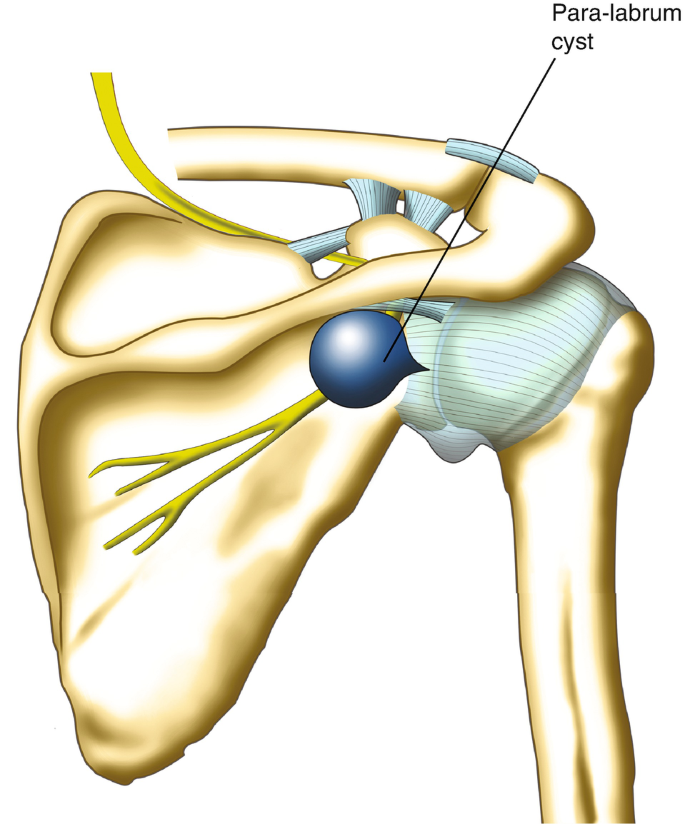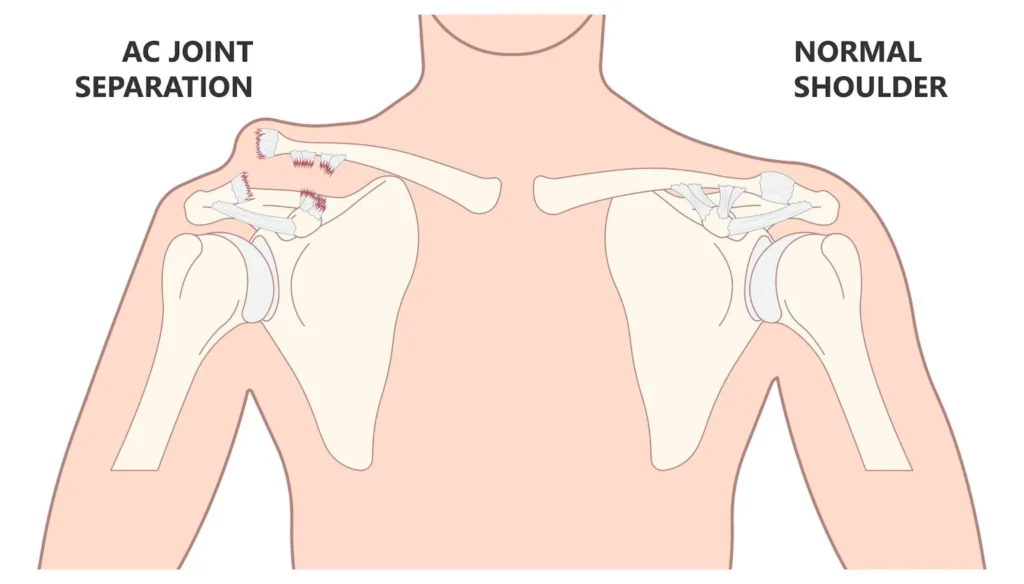Paralabral Cyst Decompression
Treat acromioclavicular joint injuries, also known as shoulder separation

Learn more what we do on this Treament
The acromioclavicular (AC) joint is where the acromion (the bony tip on the edge of your shoulder blade) and clavicle (collarbone) meet. This joint often becomes damaged due to trauma or injury. When this happens, the acromion moves out of place or separates from the clavicle, leading to torn or stretched ligaments and causing pain in the shoulder and arm.
If other forms of treatment do not work for this injury or if it is too severe, an acromioclavicular joint reconstruction may be required. Acromioclavicular joint injuries, also known as shoulder separation, typically happen due to car accidents, falls, or a direct blow to the area. It is a common sports injury as it can occur when a person falls on their outstretched hand or their joint is impacted by a strong force such as a football tackle.
If left untreated over time, it can cause wear and tear of the joint, pain, stiffness, limited range of motion, and dislocation.

Acromioclavicular joint injuries, also known as shoulder separation, is when the acromion separates from the clavicle and causes pain.
If the acromioclavicular injury is recent and not too severe, an acromioclavicular joint repair may be done via arthroscopic or keyhole repair. For chronic injuries, an acromioclavicular joint reconstruction is often required because a repair is no longer possible or sufficient to fix the joint. In this case, it may be done via open incisions.
Acromioclavicular joint reconstruction surgery involves reconstructing the damaged joint by using an allograft (tendon graft) along with mechanical fixation. During the procedure, the orthopaedic surgeon also removes the end of the clavicle or restores it to its normal position.
Essentially, the purpose of the surgery is to fit the arm back into the collarbone securely and enable normal functioning and mobility of the joint. It is typically conducted under general anaesthesia and may require an overnight stay at the hospital for monitoring.
- Relieves pain and discomfort in the shoulder
- Prevents acromioclavicular joint dislocation
- Allows normal functioning of the joint
- Improved flexibility, strength, and mobility
An acromioclavicular joint reconstruction can treat the following conditions:
- Acromioclavicular joint fractures or damage
- Acromioclavicular joint separation or dislocation
- Torn or damaged ligaments
Acromioclavicular joint reconstruction is usually performed when there is significant trauma to the joint.
After the surgery, you can expect to wear a sling for 4-6 weeks. You will be advised to take painkillers for the first few days as your shoulder may be painful and swollen. Physiotherapy exercises will also be recommended to help you regain your strength and flexibility. The duration of sessions will depend on your injury.
The exact results of this surgery depend on the severity of the injury, age, medical history, and other factors. In general, patients can expect a full recovery in 4-6 months.
Work closely with your orthopaedist and follow their recommendations for exercises and activities for the best results.
Only 1 surgery at a time is normally needed for acromioclavicular joint reconstruction, however, physiotherapy sessions and follow-up appointments are normally required for the first 6 months.
